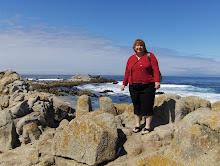
This is a good book - it's an amazing book - but it's a different book. The author doesn't begin the book with any sort of preparation or explanation about the exentricities of the location - which you have to piece together through action and dialog. Since you are dropped into the story, the first 50 or so pages are rough, but once you are past that point it's difficult to put down.
The story takes plce in Beszel (a decaying city) and Ul Quoma (a rich, vibrant city) - 2 fiercely independent cities possibly located in Eastern Europe or Western Asia. These 2 cities occupy the same physical location - sort of. It is truly one large city/state - but with with a jigsaw puzzle of boundaries dividing the two. You could actually be standing on one side of the street in Beszel and the other side of the street - or the house next door - is in Ul Quoma. Residents are trained from birth to "unsee" and in all ways not react to the other city. You were only allowed to be in and experience one city at a time. This is enforced by Breach - the all seeing organization that is necessary to keep social order. Anyone committing breach seems to disappear.
The book begins with a body found in Beszel, murder victim Mahalia Geary, a young archeology student and vocal proponent of a third city of Orciny (which is widely thought of as folklore or an urban legend.) Tyador Borlu, an Inspector with the Extreme Crime Squad, begins to investigate and soon begins to worry that the murder might have actually taken place in Ul Quoma. This means that it should be turned over to Breach - but Breach refuses to take it. This requires a very sensitive investigation and the eventual teaming with his counterpart in Ul Quoma law enforcement. They soon encounter Nationalists (bent on destroying the opposing city) and Unificationists (eager to merge the two cities) and no one seems to want to be cooperative.
This book is more than a novel. It can be seen as a example of how thoroughly authority can maniuplate it's population. It can be seen as a metaphor for segragation - children in the deep south were trained not to associate or even react to children of a different color. It's a commentary on how our political or social class identity is instilled in us from birth. Its a study on perspective. Or it could be an explanation of the isolation of urban life. Or how we can easily screen out our surroundings - how often do you notice the street "homes" of homeless people? It's a cornicopia of topics for the socially conscious to think about. It's subtle, but these thoughts creep into your awareness as you read.
This book is more a 'tale of two cities' than it is a murder mystery. While being a completely brilliant concept, is not always an easy read. The constant explaining become tedious and the slow start while the action waits for you to catch up is almost enough to make you give up. But don't. You will really have something to talk about if you finish.




No comments:
Post a Comment